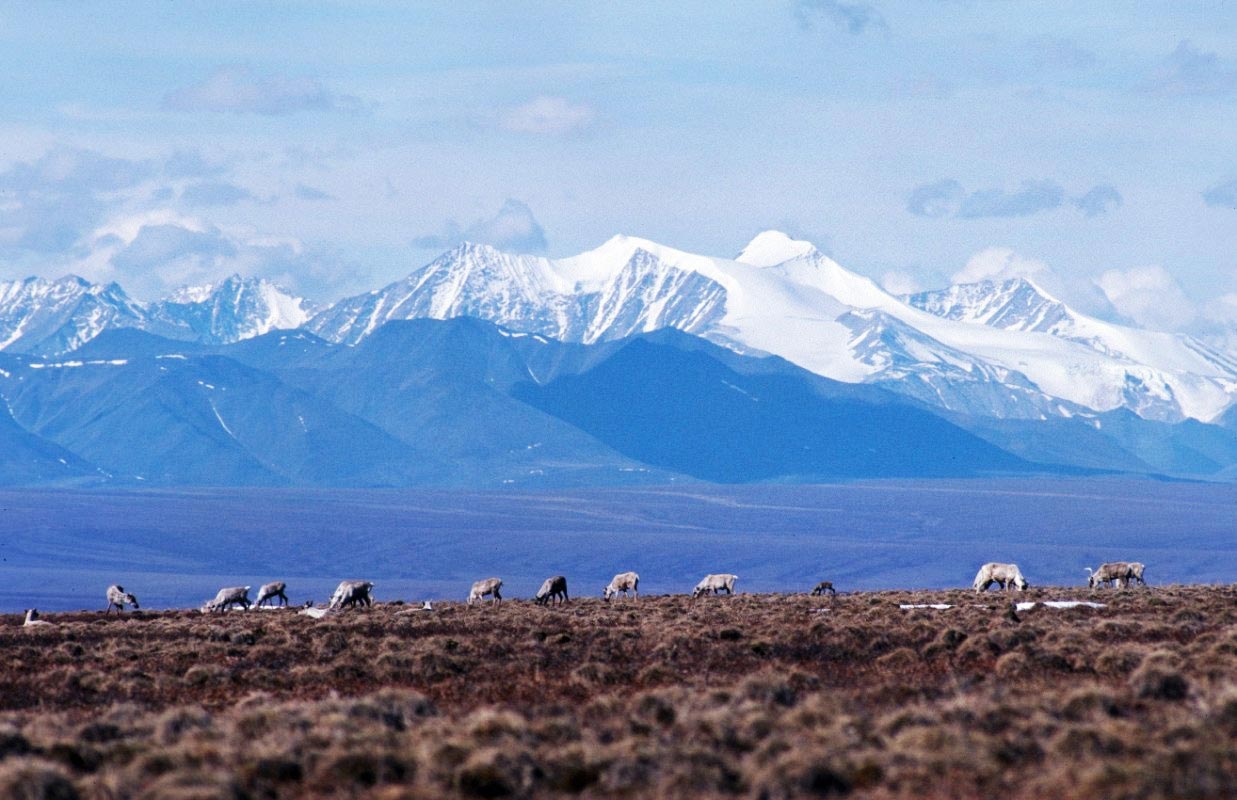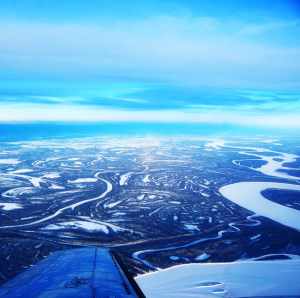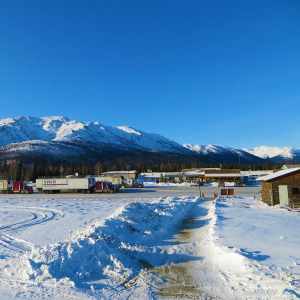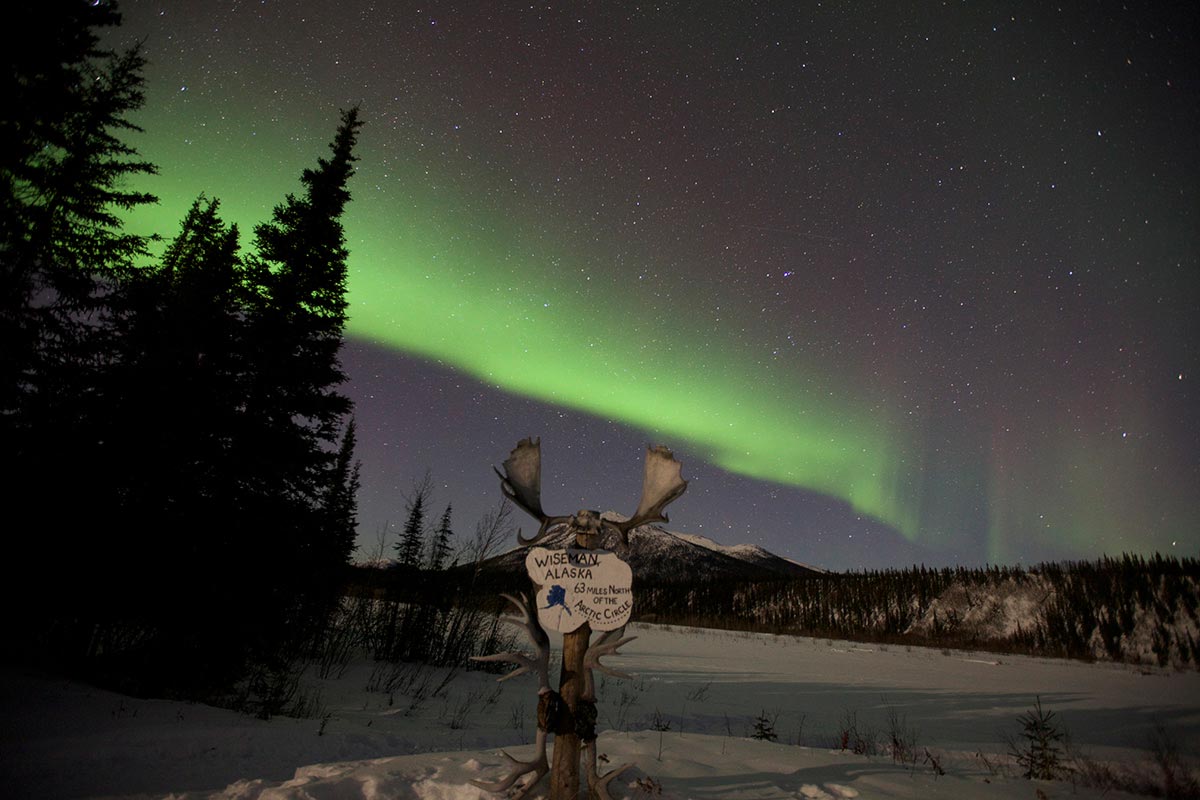When I took my first trip beyond the Arctic Circle, I had not read any John McPhee, nor did I know anything about the Brooks Range, and had never seen the Ice Road (even on TV). The idea of visiting the arctic circle seemed to simply represent the wild and unknown; a place more-or-less devoid of roads and people.
Wild and Weird
Alaska is a place that has absolutely no equal in the US. Of course, every place is distinct and unique, but Alaska’s spaciousness and vastness is something that no other place in the US even comes close to having in common.
At the risk of sounding melodramatic or hyperbolic, the amount of uninhabited space (by humans, anyway) in Alaska is frankly unfathomable. This is a place where rivers still don’t have names, where people can still get lost. Nowhere is this more true than in the Northern Interior, across the Arctic Circle. The Interior of Alaska is massive, imposing, and indifferent to the visitor. There are almost no roads in this part of the world. The population in the 80,000 square miles (about the size of Oregon) of land above the Arctic Circle is about 10,000. There is simply too much space to calculate.
This all becomes clear upon boarding a small chartered plane to fly north. Passing over hundreds of miles of sparse boreal forests, rivers, mountains, and tundra, the view from the plane offers only unclaimed and unaltered space. As the plane continues north into some unknowable landscapes, the trees thin out, and finally, the massive Brooks Range and Gates of the Arctic rise into view. This is a place that can barely be accessed, much less settled, save for the Caribou and Grizzly that reside here. It is a portal into a part of American history: the era of a largely unsettled vastness, except for the pockets of native here and there. Seeing one of the last bastions of the wild world stirs up something we seldom get to feel or see.
Heart of the Arctic: Life in Coldfoot, Alaska
The “settlement” of Coldfoot where I would stay for the night has between 3-7 year-round residents.During the coldest winters, it can get to 60 below zero, so understandably, many people would not opt-into such a lifestyle. It is not a place for the casual resident. To make such a place a home, one has to be comfortable with having “convenience” sapped from their life at every turn: grocery runs are infrequent and/or done by plane, socialization is marginal, and obviously access to technology, or the outside world, for that matter, are highly restricted if they exist at all.
Though my stay was short and obviously I’m not hunting my own food and building fires, coming face-to-face with such bigness as to make one feel so small is a powerful experience. One of National Geographic’s best hikes was listed as the Caribou Trails of the Brooks Mountains-the only hike on the list that is not an official “trail”. They list this location because it is literally always changing and unpredictable.
A Hiker’s Reflection
I took a hike with a few friends away from the lodge that we were staying at, through a run of snow-covered spruce trees forming something of a tunnel. Or at least, given their spindly size, something resembling a tunnel. Perspective slowly dawned on me as I realized how little progress we were making. Though they appear so grand and were pretty much the only thing in sight around us, they were miles off, and our pace in approaching them was glacial, at best. Still, as we marched along, we eventually reached a point where I stopped and realized we had entered a place that was as close to soundlessness as I had ever been. Out here, hundreds of miles away from any real city, so far north that almost nothing lives during the winter, and with a thick layer of snow to absorb anything else, we were standing in the most quiet place I had ever been. As an urban-dweller but having a strong penchant for quiet, this was a borderline mystical experience for me. We all paused, carefully listening into the distance, our ears reaching out for any sound at all, like giant limbs inspecting the landscape. We agreed that we thought we heard a bird several hundred meters off in the distance.
And this pretty concisely summarizes the experience of going that far north, or at least my experience. As a person who really values stillness, the far north is like one great meditation. The surface of the earth literally becomes clear and open, like the surface of the mind. Oh, and also, there are a lot of funny and strange truckers who stop in for food, but that doesn’t really have a place in my “Arctic-as-meditation” analogy.
I look forward to my next retreat!
Explore the Museum of the North
Visiting the Museum of the North in Alaska provides an enriching journey through the state’s diverse history, cultures, and natural wonders, featuring exhibits on indigenous art, wildlife, and geological formations. Located at the University of Alaska Fairbanks, the museum offers a captivating exploration of Alaska’s unique identity and the forces that have shaped its past and present.






